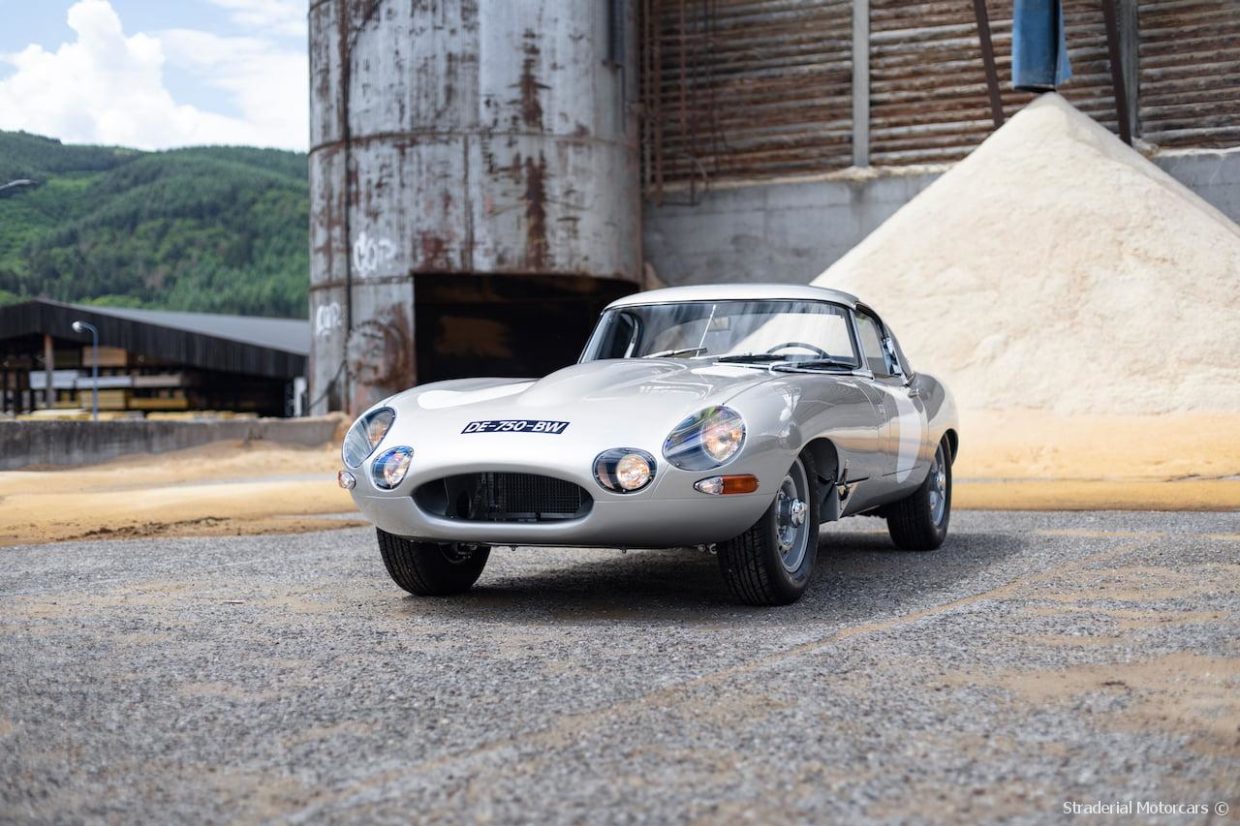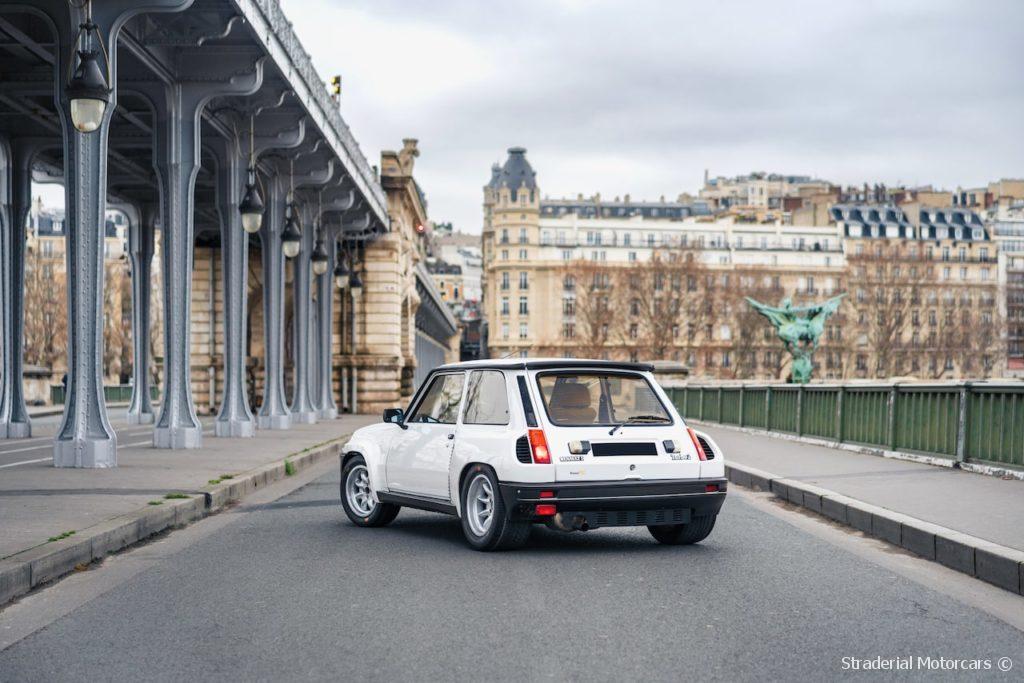The Jaguar Type E series I 3.8L
In 1961, on the shores of Lake Geneva, in Switzerland, Jaguar presented the E-Type. A very slender sports car, in line with the domineering D-Type at Le Mans, which replaces the sublime Jaguar XK. Designed by William Lyons, founder of the brand, and Malcolm Sayer, this E-Type creates a shock wave in the world of sports cars. To the point that Enzo Ferrari will consider it « the most beautiful car in the world ».
The birth of the E-Type in competition, the Lightweight.
With very encouraging results from their first races in 1961, Jaguar knows that the E-Tyoe has real sporting potential in competition.
Having won 4 victories with the C-Type and D-Type in the previous decade, Jaguar does not wish to deploy the necessary budget nor to commit itself.
In reality, the project was largely motivated by independent pilots wishing to race with a light and sharp E-Type. The factory gave birth to a handful of copies. Jaguar will therefore build the cars and sell them to wealthy Gentleman Drivers. Assistance and preparation will only be provided to two teams, that of John Coombs, pilot and Jaguar dealer, and Lindner, importer of the brand in Germany.
Jaguar takes a close look at the Ferrari 250 GT0
In 1962, Ferrari presented the 250 GTO, a real racing prototype dressed in a sublime dress based on 250 GT. John Coombs acquires the last chassis.
Malcolm Sayer, aerodynamicist at Jaguar, received the mission to reverse engineer the Ferrari 250 GTO from John Coombs.
Sir Coombs, professional pilot and Jaguar dealer, had undoubtedly wished to provoke the firm by buying this Italian thoroughbred to accelerate the Lightweight program that the factory is slow to validate. In late 1962, Sayer wrote a detailed report of the operation.
The mechanical performance was competitive, however the Type E is less efficient because of its weight. The Ferrari had more arguments in its favor, particularly in terms of the gearbox, its aerodynamics and its handling.
The GTO had almost been completely dismantled by the Experimental department which had infuriated John Coombs during an unexpected visit to the factory. The reassembly of the Italian was all the more difficult so much so that a man had even thrown the metric nuts of the Ferrari.
The Lightweight development
MIRA wind tunnel tests are then carried out as well as intense braking exercises in order to carry out a battery of analyzes.
The Experimental department then established very precise specifications for the realization. In order to save weight, Jaguar removes all unnecessary elements, and the aerodynamic body will be made entirely of aluminum.
Mechanically, the block will be made of aluminum and will receive a dry casing as well as a Lucas mechanical injection at Guillotine. The famous Wide Angle aluminum cylinder head of the Type D is back in service. Jaguar D-type connecting rods and a new crankshaft will exceed 320 horsepower and even reach 340 horsepower on the Lindner.
For the transmission, the manufacturer offered the choice between the Jaguar gearbox and the 5-speed ZF, heavier but more suited to the specifications of the XK engine.
The suspensions are fitted with new combined shock-absorbing springs. The Dunlop wheels come from the Type D. It claimed a homologation weight of 920 kilos, a gain of almost 200 kilos compared to a E-series convertible. Even the GTO was beaten with its 965 kilos.
Coventry will take into consideration the work done by John Coombs on his E-Type in competition. The Guildford dealer will also acquire the first Lightweight. With a weight of less than a ton and more than 300 horses, a weapon arrives on the circuits. Despite rock-solid reliability, the block will often be replaced by its owners by the traditional cast XK model, known for its robustness.
Production
In total, twelve Roadster with hard-top will be built during the winter 1962 – 1963.
During the first delivery, Jaguar quickly produced two copies for the 12 Hours of Sebring. N ° 2 won the title in its category and finished 7th overall. Out of eighteen planned, 12 were built, never identical. They will all be developed on the basis of the Roadster equipped with a hard-top. During the year 1963 – 1964, two of them will be bodied differently with a stern with low drag. This aerodynamic modification is inspired by the « Low Drag » designed by Malcolm Sayer in 1962 with a leaky, very aerodynamic horn. The latter was not a Lightweight, its body was made of a thinner sheet steel. A 13th copy was built for Pierre Bardinon. He will drive hundreds of kilometers every week driving his route between his two factories. However, of the 13 Lightweight built including that of Pierre Bardinon, none of them will be identical.
In competition
In addition to the highly publicized 24h of Le Mans, the E-Type will be involved in numerous events such as in Monte Carlo in 1962, the Rallye de Lyon-Charbonnières, Rallye de l’Ouest Parisien, the 1000 kms from Paris to Montlhéry. At 1,000 km from Paris on the Linas-Montlhéry Autodrome, Peter Lindner died, along with four other people, the Italian Franco Patria who piloted a Simca-Abarth, and three French track marshals. The wreck of the E-Type Lindner will be abandoned under the Montlhéry ring for many years before being recovered by a French amateur of the brand. In 1965 in Montlhéry, François Mazet’s E-Type Semi-Lightweight won the Paris Grand Prix in front of all the GTOs present.
On the Reims circuit, Dick Protheroe’s “CUT 7” E will make you forget the Sarthoise disappointment by getting ahead of the GTOs of Bianchi, Noblet and Dumay. For the 1964 season, aerodynamic designer Malcolm Sayer was called upon to modify the Lumsden and Lindner E’s in “Low Drag” version.





